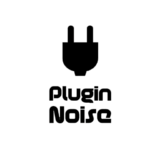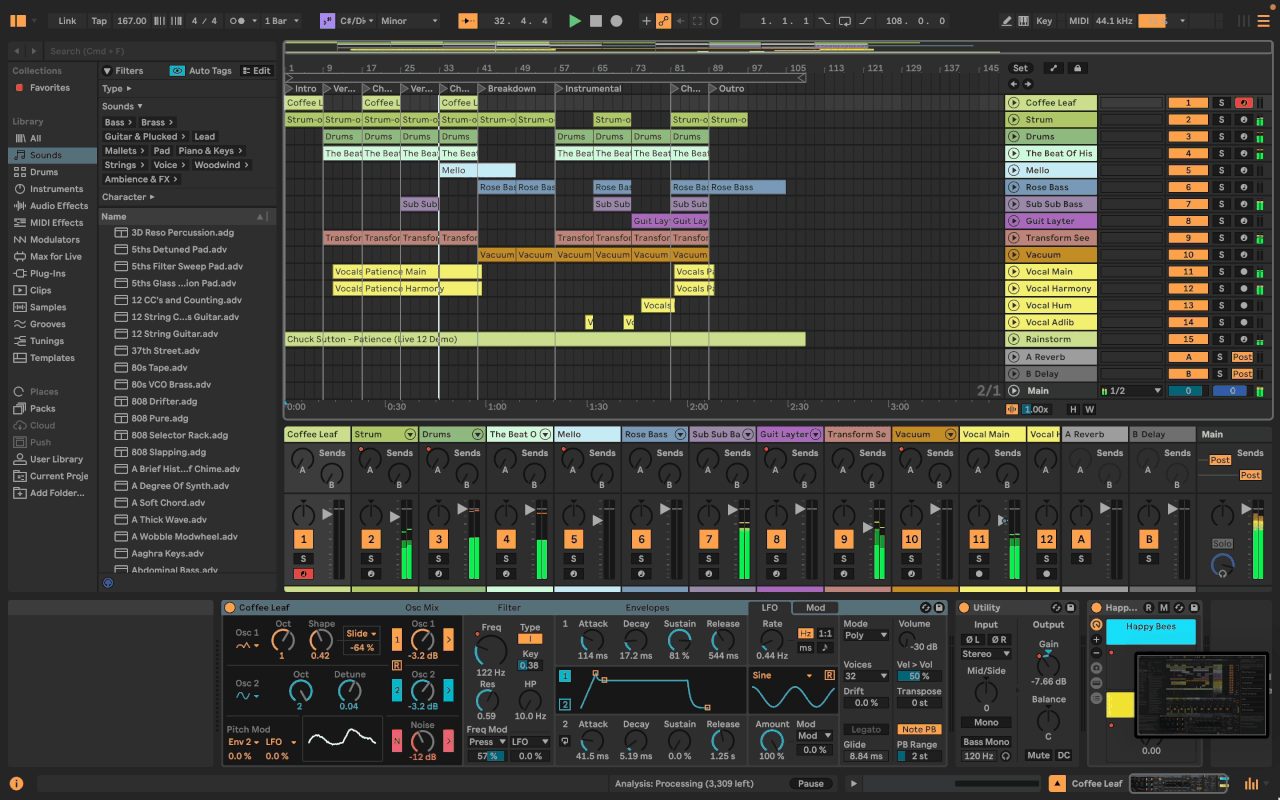With so many choices of DAWs, meaning music production software, it is hard to choose one to start with. Today one of the most famous ones is under our microscope with the question: Is Ableton Good Daw For Beginners?
Picture this: you’ve got a head full of melodies, drum patterns, and ideas that just need to be turned into music. You fire up your laptop, ready to dive into music production… and then you realize: where do you even start?
That’s where DAWs (Digital Audio Workstations) come in. They’re the backbone of modern music production, and one of the biggest names in the game is Ableton Live.
Known for its fluid workflow, live use, powerful MIDI tools, and performance-friendly design, Ableton has built a reputation as a go-to DAW for electronic music producers.
But here’s the real question: Is it a good choice for beginners? Does it make the production process easier, or will you end up staring at the interface wondering what button to press?
Some DAWs are built with simplicity in mind, while others demand time and patience to master. So where does Ableton fit in?
Let’s break it all down and see if Ableton Live is the right place to start your journey.
What is Ableton Live?
Ableton Live isn’t just another DAW, as it’s a creative powerhouse designed for fluid, fast, and performance-ready music production.
First released in 2001, it quickly made a name for itself with its unique Session View, which lets you arrange and trigger loops in real-time. This feature made it an instant favorite among electronic musicians, DJs, and live performers, as it allows for seamless improvisation and composition on the fly.
But don’t be fooled into thinking Ableton is just for electronic music. It’s built for versatility. Whether you’re producing hip-hop, rock, film scores, or experimental soundscapes, it comes packed with tools for recording, editing, and mixing both MIDI and audio.
Unlike FL Studio, which is heavily beat-focused, or Pro Tools, which dominates in studio recording, Ableton finds a balance between structured production and freeform creativity.
One of its biggest strengths is its non-linear workflow. Instead of forcing you to build a track from start to finish in a rigid timeline, Ableton lets you experiment, jam with ideas, and arrange tracks on the fly.
It’s almost like sketching out musical ideas before committing to a final arrangement, making it an ideal DAW for those who love a more dynamic and flexible creative process.
| Feature | Description | Why It Matters for Beginners |
| Session View | A non-linear, grid-based workspace for triggering loops and ideas in real-time. | Great for jamming, improvisation, and live performances. |
| Arrangement View | A traditional timeline-based editor for sequencing and structuring full tracks. | Ideal for finalizing songs and detailed editing. |
| Warping (Time-Stretching) | Allows real-time tempo and pitch adjustments without affecting audio quality. | Makes remixing and syncing tracks effortless. |
| Drag-and-Drop Workflow | Easily add samples, instruments, and effects with a simple drag-and-drop. | Fast and intuitive, no complex menus. |
| MIDI Editing & Drum Rack | A clean, easy-to-use piano roll and a dedicated drum sampler for creating beats. | Perfect for beat-making and electronic music. |
| Built-in Instruments & Effects | Includes synths like Operator & Wavetable, and effects like EQ, delay, and reverb. | Lets you start producing without third-party plugins. |
| Automation & Modulation | Automate volume, effects, and synth parameters for dynamic changes. | Essential for adding movement and creativity to tracks. |
| Max for Live (Suite Only) | A powerful tool for building custom instruments and effects. | Not essential for beginners, but super powerful for advanced users. |
| Live Performance Features | Works with MIDI controllers like Ableton Push for hands-on control. | Perfect for DJs and performing musicians. |
How Beginner-Friendly is Ableton Live?
Ableton Live has a reputation for speed and flexibility, but how does that translate for beginners? Honestly, it depends on what you need in a DAW.
If you want to jump in and start making beats fast, Ableton makes that pretty easy. I remember the first time I opened it, I was surprised at how quickly I could drag and drop sounds, tweak effects, and get a loop going compared to other DAWs.
That being said, there’s a learning curve. Ableton’s Session View and Arrangement View can be confusing at first, especially if you’re coming from a more traditional DAW.
Unlike most DAWs that follow a left-to-right, timeline-based workflow, Session View encourages a loop-based, non-linear approach. I won’t lie, at first, I had no idea what to do with all those empty clip slots.
But once I started playing around with it, I realized how powerful it is for brainstorming musical ideas without committing to a final arrangement right away.
If you’re used to a DAW like Logic or Pro Tools, this might feel a little strange at first, but once it clicks, it’s a super handy tool for creativity, especially if you like jamming with ideas before structuring a full track.
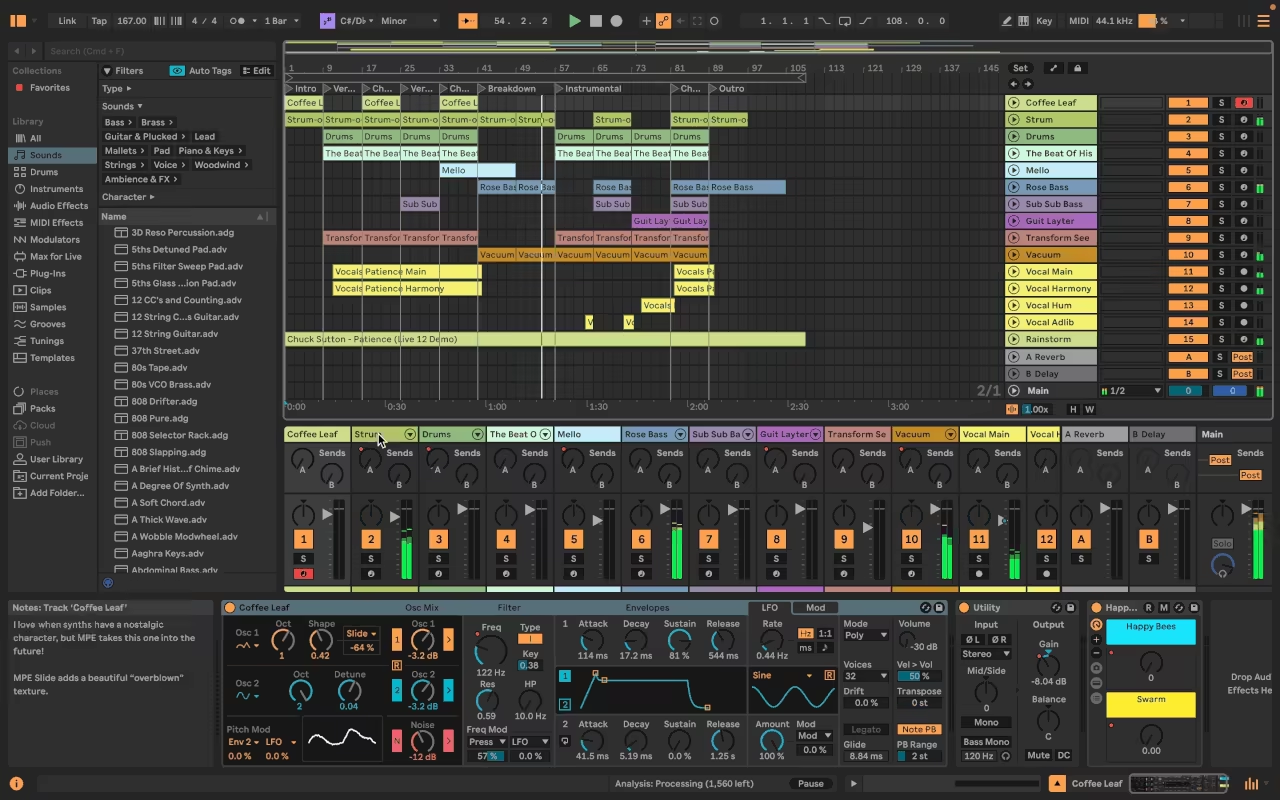
One thing that really stands out about Ableton is its minimalistic interface. Unlike DAWs packed with overwhelming menus and hidden pop-ups, Ableton keeps things compact and streamlined.
All the built-in devices (synths, samplers, effects) are designed for quick tweaking and experimentation, which I love because it means I can stay focused on the music instead of getting lost in endless settings.
But here’s the catch, Ableton doesn’t hold your hand. I’ve seen beginners get frustrated because there’s no built-in step-by-step tutorial like you’d find in FL Studio or GarageBand.
Those DAWs make it ridiculously easy to start making music immediately, while Ableton requires a little more exploration and hands-on learning.
However, this is actually one of my favorite things about it. Instead of following a rigid structure, it encourages discovery, which means the more you experiment, the more natural the workflow becomes.
Features That Matter for Beginners
When choosing your first DAW, workflow is everything. Some DAWs keep it simple, while others throw every feature imaginable at you.
Ableton Live somehow manages to strike a balance, it’s powerful but doesn’t feel overwhelming once you get the hang of it. When I first started using it, I was surprised at how quickly I could build ideas without getting buried in menus.
Here’s where Ableton really shines (and where it might challenge beginners):
- Recording & Editing Simplicity
While Ableton is more suited for loops and live use, it’s also a rock-solid recording tool. Setting up an audio track and hitting record is straightforward, and the waveform editor makes cutting, stretching, and tweaking audio super smooth.
I love how you can instantly warp and time-stretch recordings without dealing with a million extra steps. It’s a lifesaver when working with vocals or live instruments.
- MIDI & Virtual Instruments
If you’re into beat-making, composing, or electronic music, MIDI editing is a must. Ableton’s piano roll is clean and easy to use, and I love how quickly I can edit notes, adjust velocities, and quantize rhythms without breaking my creative flow.
Plus, the Drum Rack is an absolute killer for programming drum patterns. It makes layering samples and tweaking sounds way easier than in most DAWs I’ve tried.
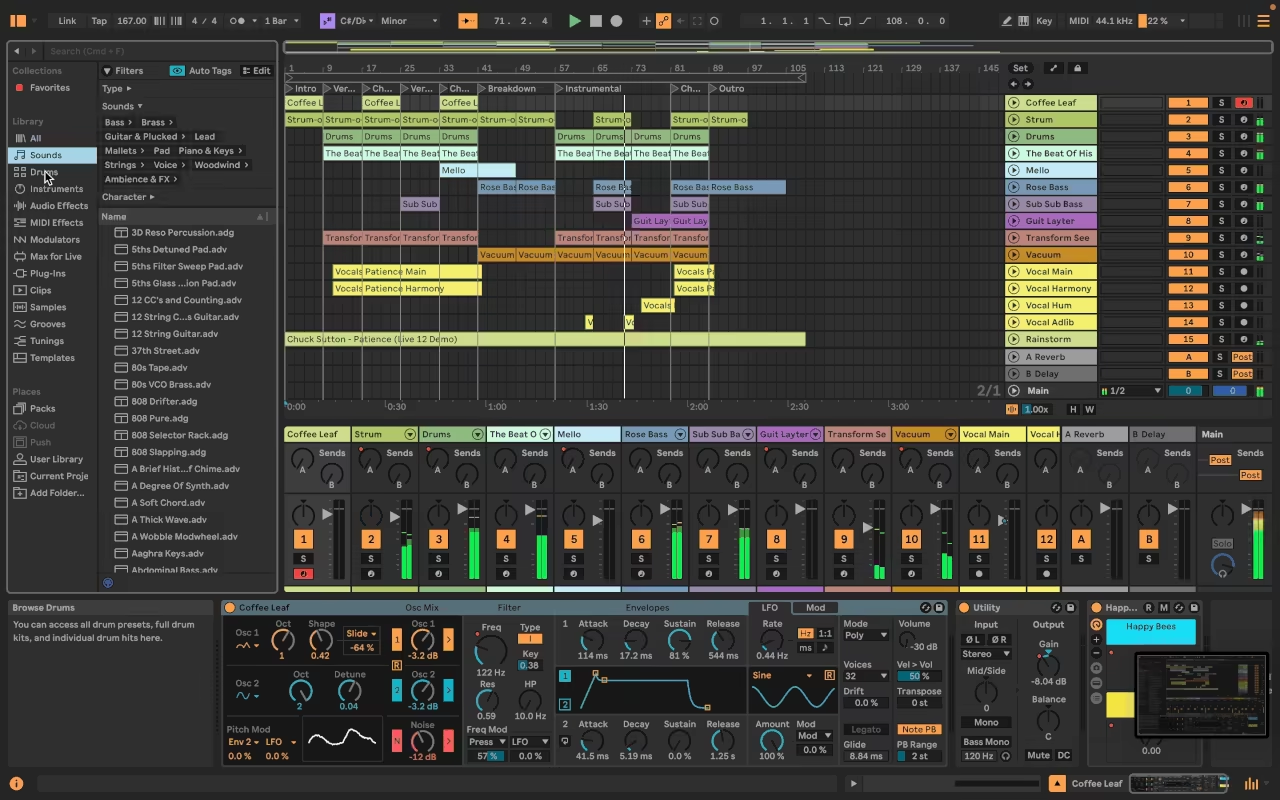
- Built-in Effects & Mixing Tools
Ableton comes with a stack of built-in effects, from EQ and compression to delays and reverbs. The best part? Everything is designed to be simple and efficient.
Instead of drowning in complicated plugin menus, I can just drag an effect onto a track and start tweaking. The stock plugins may not be as flashy as some third-party options, but trust me, they sound great and get the job done.
- Workflow & Navigation
One thing that threw me off at first was the way Ableton organizes everything. It doesn’t have traditional mixer windows like other DAWs, it’s all in the Session View and Arrangement View.
But once I got used to it, I realized how fast and flexible it is. Features like:
-
- Drag-and-Drop Simplicity: Adding samples, plugins, and instruments takes seconds.
- Racks & Chains: Lets you stack and tweak effects without clutter.
- Global Automation & Modulation: Makes shaping your sound effortless.
At first, navigating Ableton might feel a little different from other DAWs, but once you get comfortable, everything becomes second nature.
If you’re the kind of person who likes experimenting and finding your own workflow, Ableton makes that process smooth and rewarding.
How Hard Is It to Learn Ableton?
Learning a DAW is like learning an instrument; it takes time, patience, and a bit of trial and error. Ableton isn’t the easiest DAW to master, but it’s also far from the most intimidating one.
When I first opened it, I won’t lie, I had no clue what was going on. The interface looked different from other DAWs I had tried, and I kept asking myself, “Where’s the mixer?”. But, that’s because I’m more used to DAWs like Cubase and Logic, which have a different workflow.
The good news? Once you figure out the basics, everything falls into place. Ableton is designed for speed, so you don’t have to waste time diving through menus or setting up a complicated workflow.
Instead of following a strict, traditional DAW structure, it encourages a more hands-on, experimental approach. I found that once I stopped trying to use it like other DAWs and just went with the flow, things started making a lot more sense.
However, there are some learning curves:
-
- Session View vs. Arrangement View: If you’re used to traditional left-to-right workflows, Session View might throw you off at first. It took me a while to fully understand how to use it for creative looping and live jamming. But once I did, it became one of my favorite parts of Ableton.
- No Dedicated Mixer Window: Unlike DAWs like Logic or Cubase, Ableton integrates its mixing tools into the main interface, using a vertical track view. While it lacks a separate mixer window, the Session View’s mixer layout allows quick access to volume, pan, and effects.
- Effects & Devices Have a Unique Layout: Ableton’s stock plugins and effects are designed differently from other DAWs. Instead of traditional plugin windows, everything sits in the bottom device rack. At first, I kept looking for the pop-out plugin windows, but once I got used to it, I realized how much faster it made tweaking effects.
The best way to learn Ableton fast is to mess around with it. Seriously. I spent a few hours just dragging in samples, messing with loops, and seeing what happened when I twisted random knobs. That hands-on approach taught me way more than watching endless tutorials.
If you’re looking for a DAW that holds your hand, Ableton might not be the easiest choice. But if you’re willing to experiment and let the workflow sink in naturally, it’s one of the most fun and rewarding DAWs to learn.
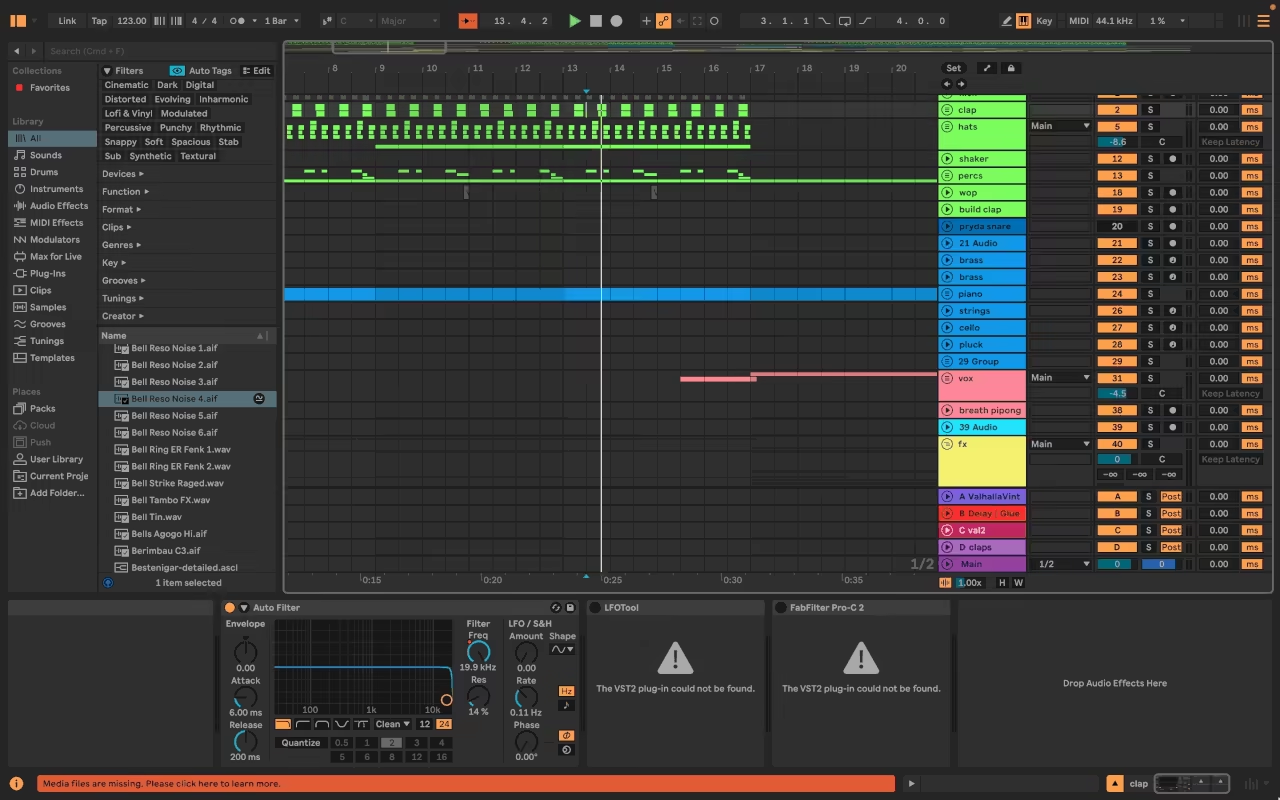
How Long Does It Take to Learn Ableton?
How fast you learn Ableton depends on your experience, workflow, and how deep you want to go. If you’ve used another DAW before, you’ll pick it up way faster, probably within a few days or weeks.
But if you’re completely new to music production, expect to spend a month or two for getting comfortable with the workflow.
When I first started with Ableton, I spent a weekend just messing around with loops and drum kits, trying to figure out what the heck was going on.
Within a few weeks, I could put together basic tracks. After a month, I felt completely comfortable, and soon, I was using automation, modulation, and live performance features like second nature.
If you want to speed up the process, here’s what worked for me:
-
- Use Ableton’s Built-In Tutorials: Ableton actually has interactive lessons inside the software. They walk you through recording, MIDI, and effects step by step.
- Experiment Instead of Overloading on Tutorials: Watching 100 hours of YouTube won’t help unless you actually play around with the software.
- Start with Simple Loops & Tracks: Don’t try to produce an orchestral masterpiece on day one, start with basic beats, synth lines, and effects.
- Join the Community: There are tons of Ableton forums, YouTube channels, and Discord groups full of tips and tricks.
How Much Does Ableton Cost?
Ableton Live comes in 3 main versions, each with different features and price points.
Whether you’re a beginner looking to experiment or a pro needing advanced tools, there’s a version that fits. But let’s be real, Ableton isn’t the cheapest DAW out there.
Here’s a breakdown of the versions:
| Version | Price | Best For | Key Limitations |
| Live Intro | $99 | Beginners who want to test Ableton | Limited tracks (16 audio, 16 MIDI), fewer instruments & effects |
| Live Standard | $439 | Intermediate producers who need more flexibility | No Max for Live, fewer instruments than Suite |
| Live Suite | $749 | Advanced producers needing the full toolkit | No major limitations, comes with everything |
You can check the full feature comparison of different versions here on the official page.
Ableton offers a 30-day free trial of Live Suite. That’s plenty of time to see if it’s the right DAW for you. Also, Ableton Live Lite comes bundled with many MIDI controllers and audio interfaces, so check if you already own a device that includes it.
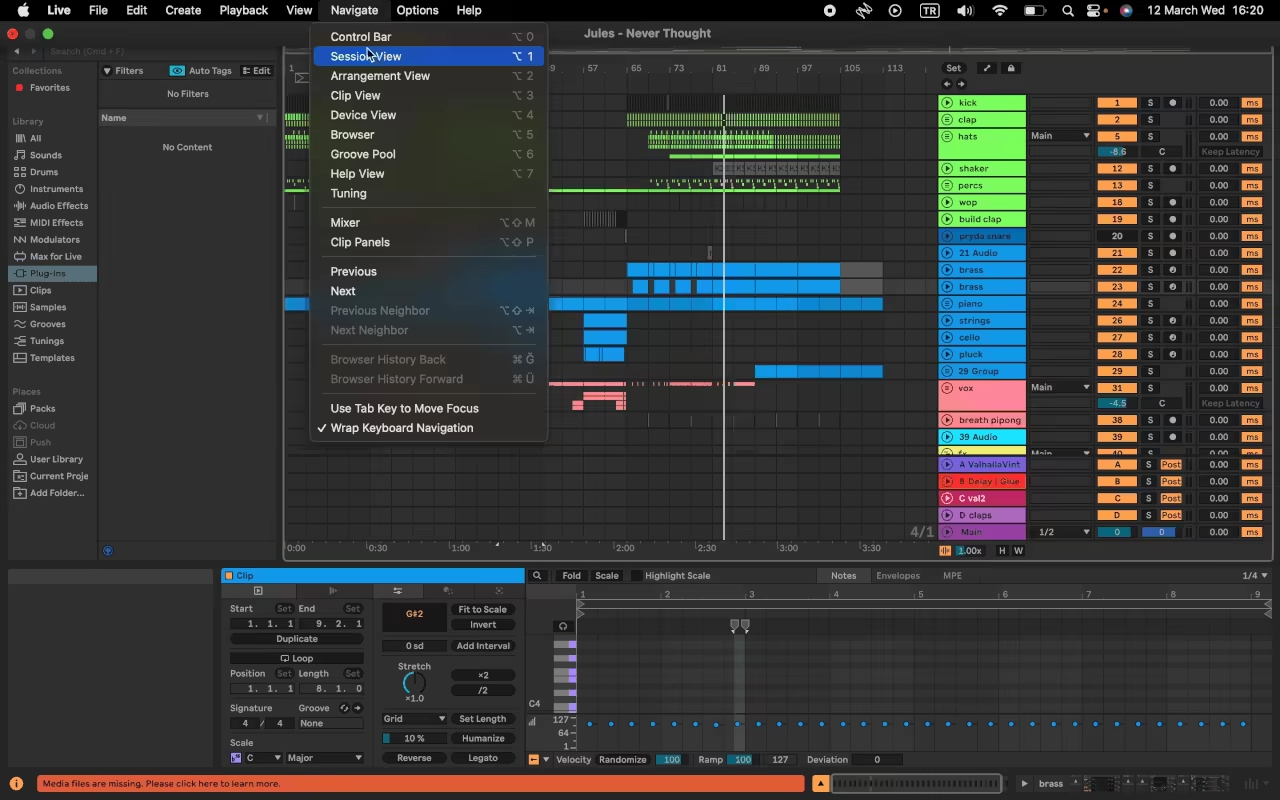
Who Should Choose Ableton as a Beginner?
Ableton Live is a powerful, flexible DAW, but that doesn’t mean it’s the right choice for every beginner. Some people thrive with its workflow, while others struggle with its unique layout.
Ableton is a great choice if you:
-
- Want a DAW that grows with you: Ableton is beginner-friendly once you get past the initial learning curve, and you won’t outgrow it as you improve.
- Are interested in electronic music, beat-making, or live performance: The Session View, Drum Rack, and MIDI workflow make it perfect for loop-based music and remixing.
- Prefer an intuitive, hands-on approach: Ableton encourages experimentation, so if you like dragging in samples and playing with sounds, you’ll love it.
- Don’t mind learning a new workflow: If you’re okay with figuring things out as you go rather than having a super structured interface, Ableton will click over time.
Ableton might not be for you if you:
-
- Prefer a traditional DAW layout: If you like Pro Tools, Logic, or Cubase, Ableton’s Session View might feel weird at first.
- Do a lot of complex audio editing: While Ableton can handle audio editing, DAWs like Cubase or Reaper offer more advanced tools.
- Want the easiest DAW to start with: FL Studio or GarageBand get you making music faster with their beginner-friendly interfaces.
Best Alternatives to Ableton for Beginners
Ableton Live is an amazing DAW, but it’s not the only option, especially if you’re just starting out. Depending on your music style, workflow preferences, and budget, you might find that another DAW suits you better. Here’s a breakdown of some of the best alternatives:
| DAW | Ease of Use | Best For | Price |
| FL Studio | Easy | Beat-making, electronic music | $99 – $499 (one-time) |
| GarageBand (Mac only) | Very Easy | Songwriting, quick ideas | Free (Mac) |
| Logic Pro (Mac only) | Moderate | All-around production | $199 (one-time) |
| Reaper | Moderate | Budget-friendly, full DAW | $60 (discounted) |
| Pro Tools | Hard | Studio recording, mixing | $299+ (subscription or one-time) |
Conclusion
So, is Ableton Live a good DAW for beginners? The answer really depends on how you like to learn and what kind of music you want to make.
If you’re looking for a DAW that encourages creativity, works great for electronic music, and has a fast workflow, Ableton is an excellent choice.
It may take a little longer to master, but once you do, it’s one of the most flexible and rewarding DAWs out there.
However, if you prefer a traditional timeline-based DAW, need advanced audio editing, or just want something super easy to start with, FL Studio or GarageBand might be better suited for you.

